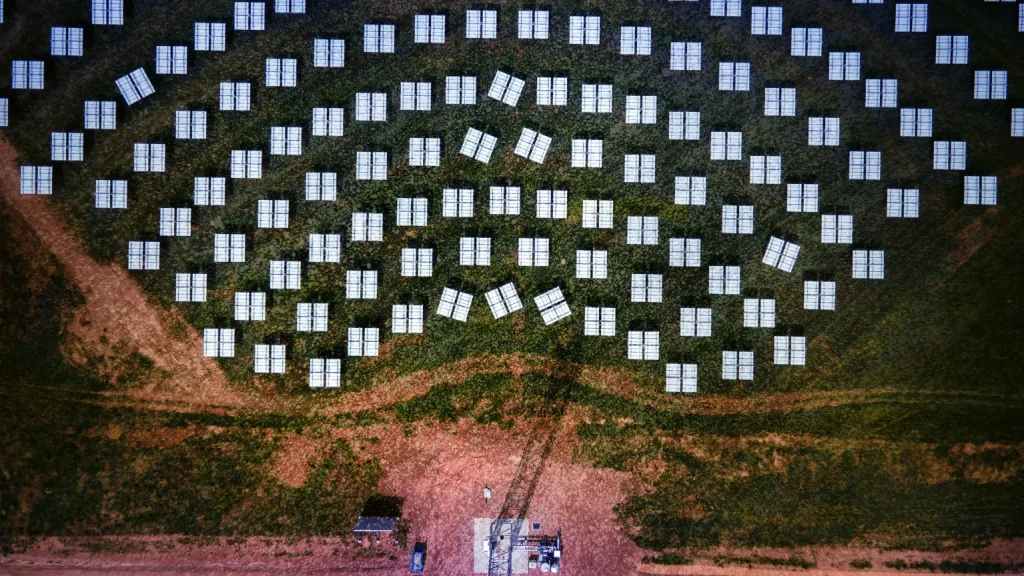
Renewables now generate a third of our power. Much more will be needed if we are to meet Australia’s target of net-zero carbon emissions by 2050. Producing the energy to replace that from fossil fuels is one challenge; transmitting it to our cities and storing it for use at night and when the weather isn’t co-operating is another.
One piece of the puzzle recently opened in Mildura, in Victoria’s north: a space-age solar farm with nests of moving mirrors that focus sunlight onto solar modules borrowed from the satellite industry. But instead of just sending power to the grid, where it is worth next to nothing when the sun shines, RayGen’s plant heats up water, stored in underground tanks, that is used to make electricity when it’s at its most valuable. “It’s a really efficient process,” says chief commercial officer Will Mosley.
Currently, solar farms in regional areas can struggle to make enough money from all the power they generate when the sun is shining. Says Will Mosley in Mildura: “You saturate the line in the middle of the day and you have to down-rate the value of electricity in that local area. We need to think about it from a structural level around where energy is being generated and being consumed. We either move to a model where we’re exceptionally flexible about when we use power, and we accept that there’s going to be blackouts, or we really think through these kinds of structural issues.”
These excerpts are from an article by Angus Holland and Jackson Graham, The Age.